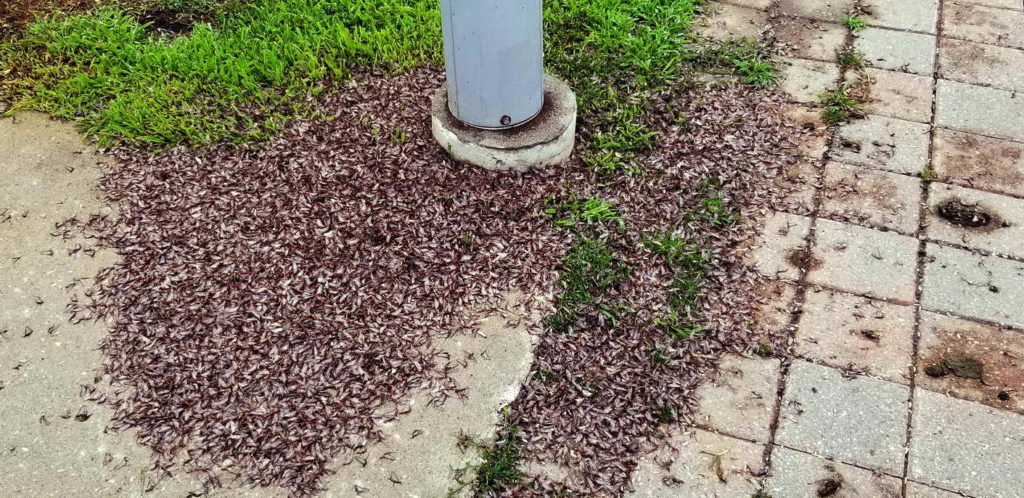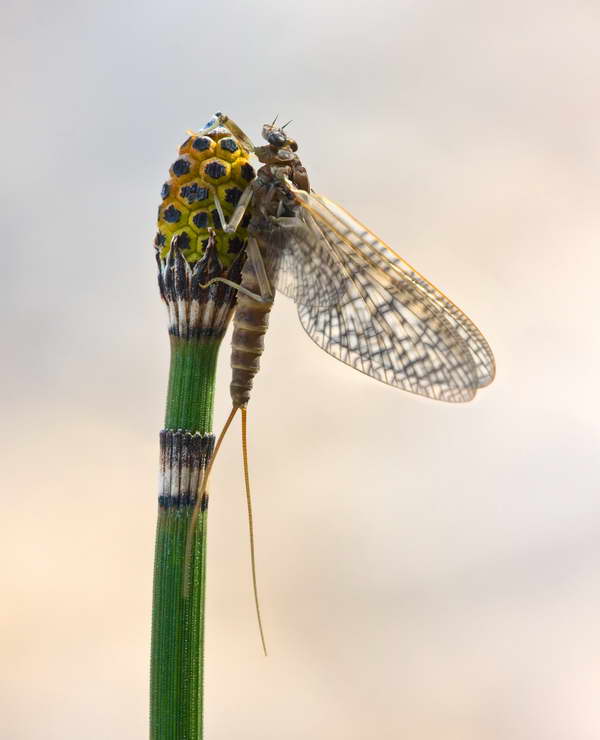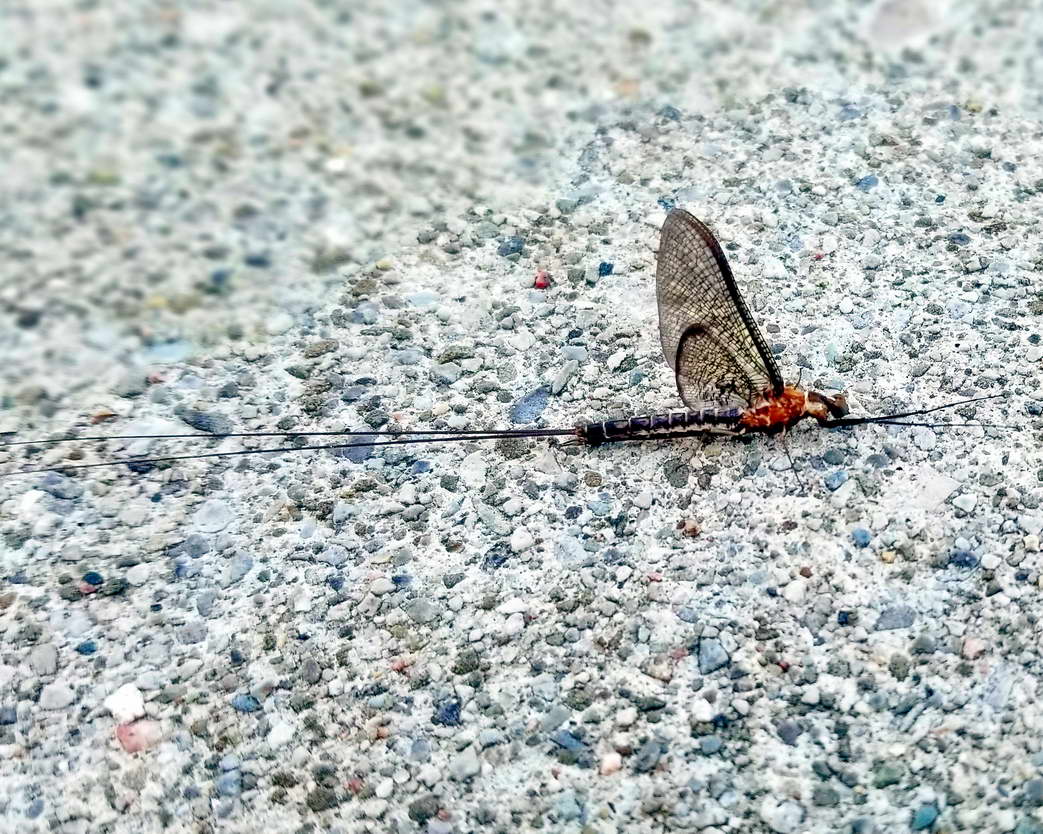As humans have discovered and catalogued their world around them, most organisms seem to fit into some sort of hierarchy. Everything, we believe, should have its place, or niche. The smallest and simplest exist to feed and strengthen those that are larger and more complex. Plankton, for example, are nearly microscopic creatures that exist in enough quantity to provide a food source for baleen whales. This class of whales includes the massive Blue which can grow to over 30 meters (100 ft) and can weigh in at over 100 tons. . Even the mosquito, that perpetual scourge of humanity, serves as a season-long source of food for other animals while also providing a limited pollination service.
To the untrained eye some of these niches can become so specific it seems as if adaptation has ceased. To the layman, there are occasional instances of creatures that beg the question “what was the point of that?” because they don’t appear to have a significant role in the ecosystem but have managed to carve out a niche for themselves. For those who live along the banks of the muddy Thames River as it flows through southwest Ontario, each year brings a showcase of a particular prehistoric creature that seems to put a fine point on the idea of an irrelevant existence.
Enter the Mayfly, or “Fishfly” as it is called in Ontario. This bug’s ancestors have been found as fossils, locked in amber over 300 million years ago, demonstrating little to no differences from their modern descendants. Ontario happens to be one of the world’s richest areas for these little dinosaur bugs. Every summer hordes of Mayfly larvae molt and transform into their juvenile and adult forms, seeming in the course of hours, and coat the landscape around the river.

The yearly appearance of the Mayfly is an event that, for a person who has not experienced it before, seems like it should be a sign of the end times. During heavy moultings, scenes of retailers and home dwellers sweeping and shoveling away dead Mayfly corpses from their walkways are common. Doorways, windows and walls are glazed with a slightly shimmering living crust of two inch long bugs. Going out at night reveals vast swirling hordes of the things circling light posts in swarms thick enough to dim the ambient light. These clouds of bugs mimic large weather systems. The swirling, shimmering mass forms a central shaft of dead bugs dropping from the living cloud like downbursts of rain from a thunderstorm . With every footfall they crunch with popping sound akin to walking across small, crispy bubble wrap. When a hatching is heavy, they are ubiquitous, seeming to be of some primitive hive mind that is driving them to land in or on everything and everywhere.
Everywhere, that is, until a certain distance is attained away from the river. The boundary changes from moult to moult, but it’s generally within a half kilometer of the water. Once across that magical boundary, the instances of Mayfly sightings drop off precipitously. Crossing that line can be very dramatic. In the same way that a hard rain in the distance looks like a wall and upon approach has a very defined line between wet and dry, Mayflies can create a similar effect. Travelling along a road can transform a blissful summer night’s drive into a journey through apocalyptic grade hordes of bugs within a matter of meters if a bridge crossing is part of the route during a moulting. The occupants may experience a decrease in visibility akin to driving into a heavy rainstorm. However, the sound of raindrops is replaced by the dull thumps of large bugs hitting the windshield and a distant crackling as the tires grind over the bodies of the little beasts. Walking over a bridge through a swarm like this is not a pleasant experience either.
These are not aggressive bugs, they just do not appear to be at all aware of their surroundings. They fly around in what appears to be a random fashion, mostly attracted to flat surfaces and lights. Mayflies seem to be some of the more relaxed members of the bug world as they are not actively looking for food or a fight and will do nothing to defend themselves because they never seem to feel threatened. They are simply hoping to find a mate and they only have about 24 hours to do so. Bouncing off of a person’s glasses or getting stuck in a person’s hair is part and parcel of a normal day, the only day they get, for these bugs.
Which brings things around to the initial question–what is the point of the Mayfly? Evolutionary theory implies that creatures have, over time, adapted to their surroundings and fulfill a purpose in the ecosystem. If a living thing develops an adaptation that is beneficial, it will be passed along and become more common amongst the creature’s descendants. Implied in this is a continued renewal within species that allows living things to find and possibly keep their place in a changing world. The Mayfly has evolved, or seemingly nearly stopped evolving millions of years ago, with a life cycle of days and an adult life of hours. Once fully mature, the Mayfly is equipped with a mouth, legs and digestive tract, but none of those parts work. In fact, the digestive tract is filled with air, which contributes to the popping sound when a person inevitably steps on one or, more likely, a bunch.
To a layman, from an evolutionary, and arguably from a Great Designer perspective, the question of “what was the point of that?” seems justified. Mayflies exist for such a short time that their biomass doesn’t make a long term contribution to the food supply of higher order creatures. They do not pollinate or carry seeds from one area to the next. They exist to reproduce, mess up our cityscapes and then die– or so it seems.

In actuality, the Mayfly is an important asset to the local river environment. During their larval stage, which is the stage of life that they will spend most of their time in, they live on the bottom of rivers, lakes and ponds. They burrow and disturb the silts that lie along the river bottoms and release the algae into the water above. This algae is then consumed by higher order animals and allows them to thrive. As an aside, and a benefit to any humans who use watercourses for study or food, large Mayfly hatches reflect a healthy local water system as well.
Intimidating in form and quantity the Mayfly is, nevertheless, and interesting bug. With their localized breeding and living areas, they are not encountered by many people around the world. But for those that live near their habitat the Mayfly is King for a few days each summer. Humans are, to them, inconsequential objects to be navigated around or flown into during the race against the clock to find a mate.
For more information on this confounding little bug, I would urge the reader to check out Mayfly Central, from Purdue University. Written by people who love bugs, this was the primary resource used to learn about the Mayfly and is an interesting, quick and more detailed read. You could also check out the CTV News story on Youtube from 2019. It will help you get the full effect of living with the Mayfly.





0 Comments